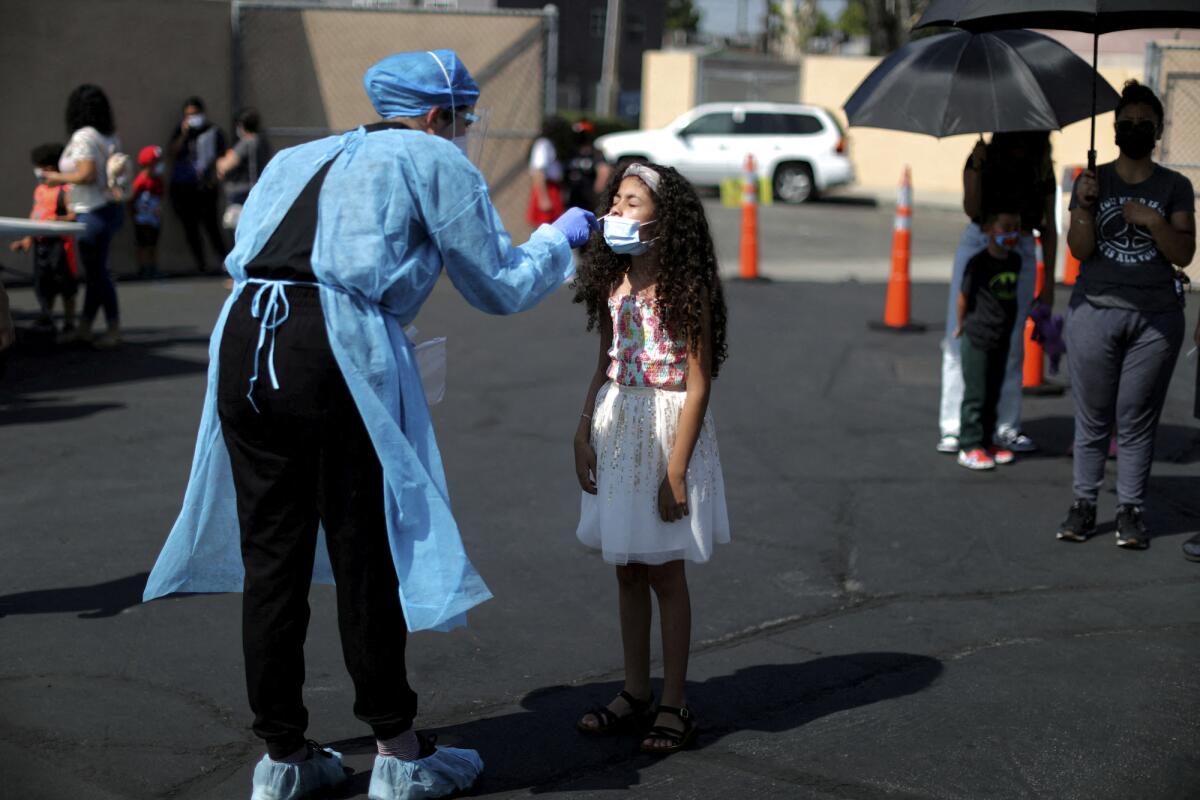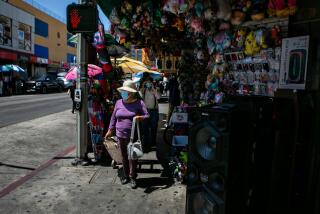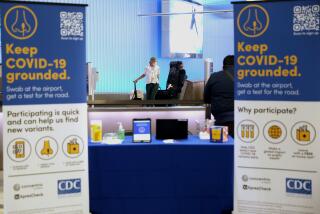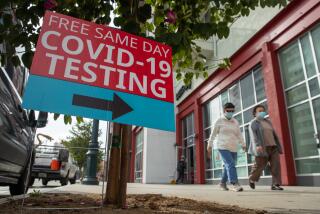L.A. coronavirus cases continue decline but hot spots remain

Coronavirus transmission continues to decline in Los Angeles County after the months-long surge driven by the Omicron variant, with the county health department on Saturday announcing just 1% of tests performed daily are coming back positive. But some hot spots remain, with outbreaks reported at multiple correctional and law enforcement settings.
L.A. County public health officials on Saturday reported 1,382 cases of the virus and 48 related deaths. The seven-day average of new cases has dropped nearly 61% over the last two weeks, according to The Times’ coronavirus tracker. There were 792 COVID-19 patients in county hospitals as of Friday, a decline of about 47% from two weeks before, when there were 1,502 patients.
The declines have enabled county public health officials to lift the countywide indoor mask mandate and stop requiring vaccination verification to attend outdoor mega-events or indoor bars and nightclubs.
Still, some pockets of infections persist. Some correctional facilities are continuing to report a high number of infections, with active outbreaks at the state prison in Lancaster infecting 1,869 inmates, 864 staff and killing 14; at Men’s Central Jail in Los Angeles infecting 1,305 inmates, 499 staff and killing 12; and at L.A.’s Twin Towers Correctional Facility infecting 4,285 inmates, 1,136 staff and resulting in nine deaths, according to the L.A. County Public Health Department.
The Transportation Security Administration at Los Angeles International Airport also is experiencing an outbreak that has infected 334 employees — one of 78 active nonresidential outbreaks that have together infected 1,991 people, according to the health department.
Outbreaks have also been reported at Central Juvenile Hall in L.A. and Barry J. Nidorf Juvenile Hall in Sylmar, which have seen 253 inmates and 220 staff and 60 inmates and 94 staff infected, respectively. In total, there are 16 active outbreaks at correctional and law enforcement settings that have together infected 11,574 inmates, 3,820 staff and resulted in 43 deaths, according to county health department.
The now-abating surge has been felt unevenly in other ways, with disparities persisting across racial, ethnic and socioeconomic lines. Between Jan. 29 and Feb. 11, for every 100,000 unvaccinated residents in each racial or ethnic group, 74 Latino and 60 Black residents were hospitalized for COVID-19, while 43 white and 30 Asian American residents were, according to data analyzed by Los Angeles County public health officials and publicized this week.
And from Jan. 29 to Feb. 4, for every 100,000 unvaccinated residents divided into groups by their areas’ poverty status, eight people living in the county’s wealthiest areas died, compared to 76 in the county’s poorest areas.
Black and Latino residents, as well as those living in areas of high poverty, are at risk for more severe illness and death related to COVID-19 because of legacies of environmental racism that see some neighborhoods intercut by pollution-spewing freeways, increasing the incidence of asthma and other chronic conditions, coupled with poorer access to healthcare. Residents are also more likely to live in crowded housing and to work a front-line job that requires leaving home, both of which increase the risk of exposure.
Times staff writers Rong-Gong Lin II and Luke Money contributed to this report.
More to Read
Sign up for Essential California
The most important California stories and recommendations in your inbox every morning.
You may occasionally receive promotional content from the Los Angeles Times.











